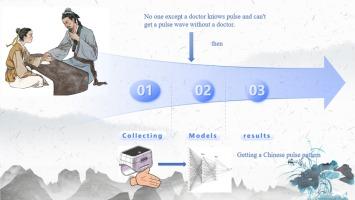TPC-GCN: Deep learning for pulse pattern classification in traditional Chinese medicine
IF 2.3
4区 医学
Q3 ENGINEERING, BIOMEDICAL
引用次数: 0
Abstract
Pulse diagnosis holds a pivotal role in traditional Chinese medicine (TCM) diagnostics, with pulse characteristics serving as one of the critical bases for its assessment. Accurate classification of these pulse pattern is paramount for the objectification of TCM. This study proposes an enhanced SMOTE approach to achieve data augmentation, followed by multi-domain feature extraction. Graph data structures with varying configurations are subsequently constructed to facilitate more profound insights into the intrinsic information within the data. Additionally, a multi-channel lightweight graph convolutional network (GCN) is devised. This network's core strategy lies in extracting diverse layers of information through parallel branches, integrating local structural information with adaptive weights, and employing attention-weighted fusion to improve classification accuracy and model robustness. The proposed network model achieved 91.68% accuracy, a mean F1 score of 92%, a mean recall rate of 92%, and a mean precision rate of 92% on the pulse dataset. The results demonstrate a marked improvement in pulse classification accuracy, validating the efficacy of this approach while offering new perspectives and methodologies for pulse signal classification research.

TPC-GCN:中医脉象分类的深度学习
脉象诊断在中医诊断中占有举足轻重的地位,脉象特征是评价脉象优劣的重要依据之一。这些脉象的准确分类对于中医的客观化至关重要。本研究提出了一种增强的SMOTE方法来实现数据增强,然后进行多域特征提取。随后构建具有不同配置的图数据结构,以便更深入地了解数据中的内在信息。此外,还设计了一个多通道轻量级图卷积网络(GCN)。该网络的核心策略是通过并行分支提取不同层次的信息,将局部结构信息与自适应权值相结合,并采用注意力加权融合来提高分类精度和模型鲁棒性。该网络模型在脉冲数据集上的准确率为91.68%,平均F1得分为92%,平均查全率为92%,平均查准率为92%。结果表明,脉冲信号分类精度显著提高,验证了该方法的有效性,同时为脉冲信号分类研究提供了新的视角和方法。
本文章由计算机程序翻译,如有差异,请以英文原文为准。
求助全文
约1分钟内获得全文
求助全文
来源期刊

Medical Engineering & Physics
工程技术-工程:生物医学
CiteScore
4.30
自引率
4.50%
发文量
172
审稿时长
3.0 months
期刊介绍:
Medical Engineering & Physics provides a forum for the publication of the latest developments in biomedical engineering, and reflects the essential multidisciplinary nature of the subject. The journal publishes in-depth critical reviews, scientific papers and technical notes. Our focus encompasses the application of the basic principles of physics and engineering to the development of medical devices and technology, with the ultimate aim of producing improvements in the quality of health care.Topics covered include biomechanics, biomaterials, mechanobiology, rehabilitation engineering, biomedical signal processing and medical device development. Medical Engineering & Physics aims to keep both engineers and clinicians abreast of the latest applications of technology to health care.
 求助内容:
求助内容: 应助结果提醒方式:
应助结果提醒方式:


